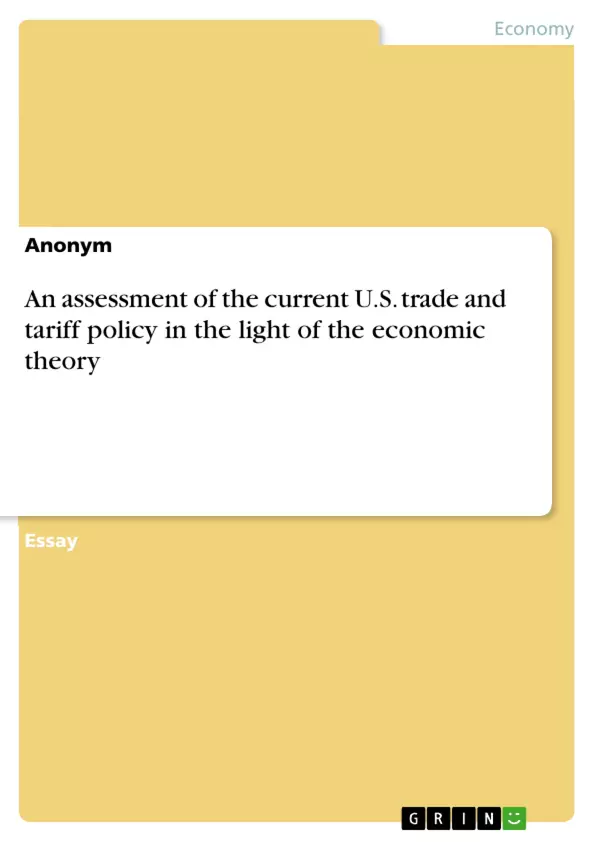The following scientific essay is an analysis of the consequences of tariffs and trade and assesses the U.S. impact on international trade. The term paper is divided into two main parts. The first part includes a theoretical discussion of the international trade theory and provides an introduction to the comparative advantage. It represents an explanation of the usage of tariffs and how it affects a vast country like the United States. The second part is a short assessment of the U.S. trade and tariff policy. The background and the current issue will be discussed. In the end, there will be a summary with a conclusion of this term paper.
In the year 2018 Trump and his administration imposed import tariffs. The tariffs had raged in rate between 10 and 50%. Especially China, the most important trading partner to the U.S. retaliated with tariffs on approximately $121 billion exports from the United States. This behaviour led to the “trade war” between the U.S. and China. Besides, the trading partner China, other trading partners got also imposed with higher tariffs. The behaviour from the U.S. raised some questions about the future path of international trade.
Table of Contents
- Introduction
- Theories behind trade and tariffs
- International trade theory and the comparative advantage
- Point of tariffs
- Welfare effects of a tariff
- Assessment of U.S. trade and tariff policy
- Background
- Current issue and assessment
- Conclusion
Objectives and Key Themes
This scientific essay aims to analyze the consequences of tariffs and trade, specifically assessing the impact of U.S. policy on international trade. It examines the theoretical framework of international trade, focusing on the theory of comparative advantage and the application of tariffs. The essay then analyzes the U.S. trade and tariff policy, exploring its background and current issues.
- International trade theory and comparative advantage
- The use and effects of tariffs
- The impact of U.S. trade policy on international trade
- The consequences of the "trade war" between the U.S. and China
- The implications of U.S. tariffs on global trade relations
Chapter Summaries
The first chapter provides an introduction to the topic, outlining the context of the essay and its objectives. It briefly discusses the recent trade war between the U.S. and China, highlighting the rise in import tariffs and their potential impact on global trade.
Chapter two delves into the theoretical framework of international trade, explaining the concepts of comparative advantage and the use of tariffs. It explores how tariffs can affect a country's welfare, emphasizing the potential benefits and drawbacks of such policies.
Chapter three focuses on the assessment of U.S. trade and tariff policy. It examines the background of this policy, including historical context and key events, leading up to the current trade disputes. This chapter also analyzes the present situation, including the challenges and controversies surrounding U.S. trade policy.
Keywords
The essay explores the following key concepts: international trade, comparative advantage, tariffs, trade policy, economic welfare, U.S. trade relations, trade wars, globalization, protectionism, and free trade. It examines the impact of U.S. trade policies on international trade, particularly focusing on the trade war with China and its implications for global economic relations.
- Quote paper
- Anonym (Author), 2020, An assessment of the current U.S. trade and tariff policy in the light of the economic theory, Munich, GRIN Verlag, https://www.grin.com/document/1026120



